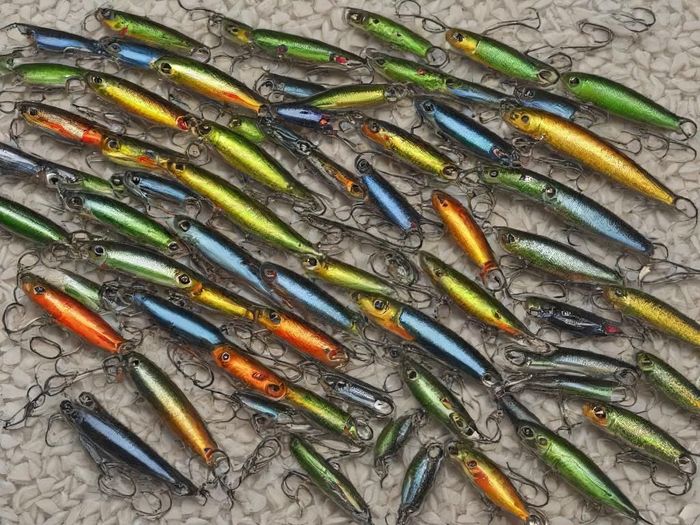4 Ways to Hunt the Summer Grass for Big Bass
Bass fishing in summer grass can be a tough challenge. The dense vegetation often hides the biggest bass, making them hot targets.

Bass fishing in summer grass can be a tough but wanted challenge. The dense vegetation often hides the biggest bass, making them elusive targets. Understanding the behavior of bass in these conditions is crucial. It can significantly improve your catch rate and overall fishing experience.
In this guide, we'll delve into effective bass fishing techniques. We'll focus on locating and catching big bass in summer grass. Let us help you in finding the best bass lures for this season. We'll also discuss early summer bass fishing strategies and how to maximize your success in grassy waters.

Understanding Bass Behavior in Summer Grass
Bass behavior in summer grass is influenced by several factors. These include water temperature, light conditions, and the availability of food. In the summer, bass often seek refuge in grassy areas. These areas provide shade, cooler water, and abundant food sources.
Understanding these behaviors can help you predict where the bass will be. It can also guide your lure selection and fishing techniques.
For instance, bass are more likely to be active during cooler parts of the day. They may also be more responsive to certain types of lures.


Water Temperature and Bass Location
Water temperature plays a significant role in determining bass location. Bass are cold-blooded creatures, meaning their body temperature is influenced by their surroundings.
When the water is warm, bass tend to seek cooler areas. This often leads them to the shaded, cooler waters of grassy areas.
Identifying Prime Grassy Areas
Not all grassy areas are equal when it comes to bass fishing. Some areas are more likely to hold bass than others. Look for areas where the grass is dense and provides ample cover. These areas often attract baitfish, which in turn attract bass.
Also, consider the depth of the water. Bass often prefer areas where the water is not too shallow or too deep.
Essential Bass Lures for Summer Grass
Choosing the right lure is crucial for successful bass fishing in summer grass. The lure should mimic the natural prey of the bass in the area.

It should also be designed to navigate through grass without getting snagged. There are several types of lures that are effective in these conditions.
Topwater lures, frogs, weedless lures, and swimbaits are all excellent choices. Each has its own unique advantages and can be used in different situations.
Understanding when and how to use each lure can significantly increase your chances of landing a big bass.
Topwater Lures and Frogs
Topwater lures are a great choice for summer bass fishing. They create a disturbance on the water surface that can attract bass from a distance.
Frogs are a type of topwater lure that are particularly effective in grassy areas. They are designed to mimic a frog hopping along the surface of the water. Bass are known to feed on frogs, making these lures a tempting target.
Weedless Lures and Swimbaits
Weedless lures are designed to navigate through grass without getting snagged. They have a streamlined design and a protected hook.
Swimbaits are another excellent choice for fishing in grass. They mimic the swimming action of small fish, which are a primary food source for bass. When used correctly, these lures can entice bass to strike, even in dense grass.
Advanced Techniques for Summer Bass Fishing
When fishing in summer grass, it's not just about the lure. The technique you use can make a big difference. There are several advanced techniques that can help you locate and catch bass in these conditions.
Punching and flipping are two techniques that are particularly effective in dense grass. Drop shot and spinnerbaits are also useful techniques to have in your arsenal.
Punching and Flipping in Dense Grass
Punching is a technique used to penetrate dense grass beds. It involves using a heavy weight to 'punch' your lure through the grass to reach the bass below.
Flipping, on the other hand, is a casting technique that allows you to place your lure accurately in tight spots. Both techniques require practice, but once mastered, they can significantly increase your catch rate in grassy areas.
Drop Shot and Spinnerbaits
Drop shot is a rigging technique that allows for precise bait placement. It's particularly effective when bass are holding close to the bottom. Spinnerbaits, with their flashy blades, are great for attracting bass in stained water.
Both techniques can be highly effective when fishing in grass, especially when combined with the right lure selection.

Timing and Precision: When and How to Target Bass
Knowing when and how to target bass is crucial for successful summer grass fishing. Bass are most active during certain times of the day, and their behavior can also be influenced by various environmental factors.
Understanding these patterns and learning how to read the water and structure can greatly improve your chances of finding and catching big bass in summer grass.
Best Times of Day for Active Bass
Bass are most active during the early morning and late evening hours. During these times, bass often move into shallow water to feed, making them easier to target. However, don't discount the midday hours, especially on cloudy days or in stained water, as bass can still be active during these times.
Reading Water and Structure
Reading the water and identifying bass-holding structures is a skill that comes with experience. Look for changes in water color, current, and depth, as well as the presence of cover like grass, lily pads, and fallen trees.
These areas often hold bass, especially during the hot summer months when bass seek out cooler, shaded areas.
Conclusion: Maximizing Your Summer Bass Haul
Mastering these bass fishing techniques can significantly improve your summer bass haul. Remember, patience and persistence are key. Keep practicing, and you'll soon be reeling in those big bass from the summer grass.


